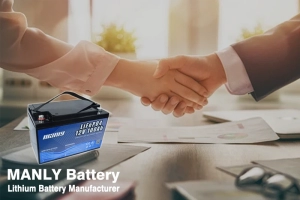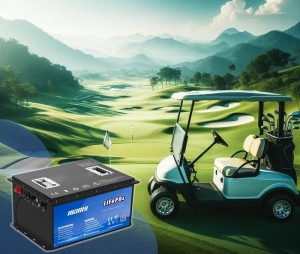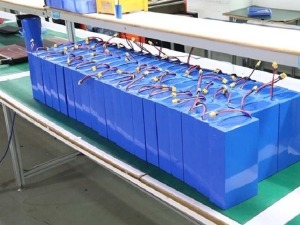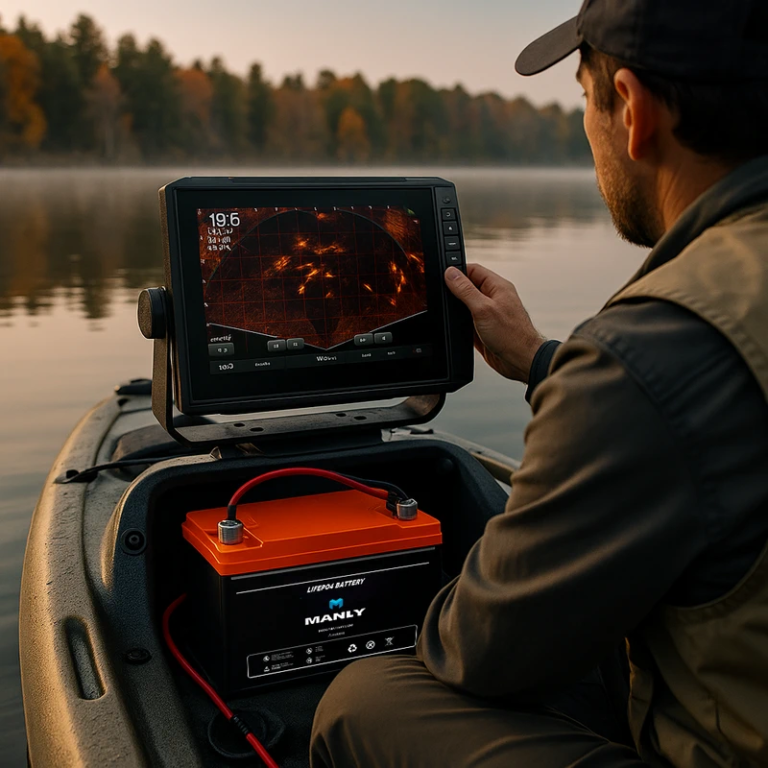Compreendendo se as baterias de íon de lítio são perigosas
Índice
- Compreendendo se as baterias de íon de lítio são perigosas
- Compreendendo a fuga térmica da bateria de lítio: riscos e dicas de segurança
- Lidando com o impacto ambiental das baterias de íon de lítio
- Aumentando a segurança das baterias de íon de lítio com tecnologia avançada
- As principais vantagens das baterias de lítio na tecnologia moderna
- Melhores práticas para uso seguro e eficiente de baterias de lítio
- Bateria MANLY: Excelência na fabricação de baterias de íons de lítio
- Conclusão
- Saiba mais sobre bateria
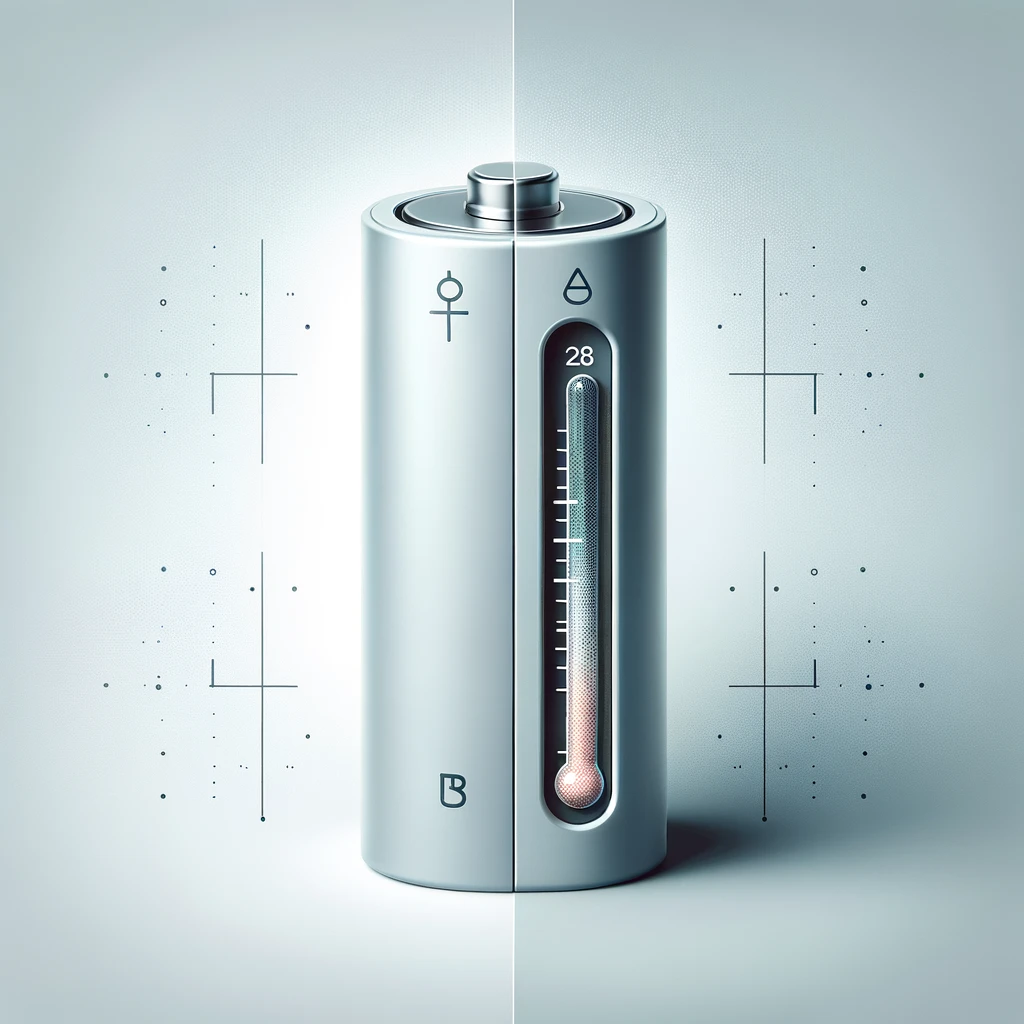
Compreendendo a fuga térmica da bateria de lítio: riscos e dicas de segurança
Lithium ion batteries power everything from smartphones to electric vehicles, offering high efficiency and long life. However, their widespread use brings significant safety concerns, primarily due to lithium battery problems like thermal runaway and fire risks.Thermal runaway is a critical issue where an increase in temperature can lead to a self-sustaining, exothermic reaction. This reaction is particularly dangerous in lithium ion batteries because it can lead to a fire or even an explosion. The danger is exacerbated by the flammable nature of the organic electrolytes used in these batteries, making them more susceptible to thermal runaway lithium battery incidents.Recent examples illustrate the severity of these risks. On September 29, 2023, a fire at a chicken farm in Saint-Esprit, France, was caused by the explosion of lithium-ion batteries used in a photovoltaic storage facility. Despite the rapid response by EDF workers who disconnected the damaged device and used water barriers to protect local residents, the fire, fueled by 400 operational storage batteries, posed a significant risk of toxic smoke.Another incident on September 18, 2023, at the Terra-Gen energy storage facility in Vesper & VC Road, Valley Center, escalated to a severe fire that burned for hours. Residents within a quarter-mile were evacuated, while those within half a mile were advised to shelter in place. The fire was eventually contained by the built-in fire suppression systems within the units, underscoring the importance of such safety measures in preventing wider disaster.Furthermore, on February 23, 2024, a fatal fire in Harlem, New York, which resulted in one death and 18 injuries, was triggered by the explosion of a lithium-ion battery, according to the FDNY. This incident highlights how common these batteries have become in our daily environments and the critical safety risks they pose.Addressing lithium battery safety involves understanding and mitigating these risks. Consumers and manufacturers alike must be aware of the conditions that can lead to thermal runaway, such as overcharging, physical damage, and improper storage. Safety precautions should include using batteries and chargers that meet safety standards, storing batteries away from flammable materials, and disposing of them properly.The lithium battery thermal runaway process involves several stages, starting with the decomposition of the solid electrolyte interface (SEI) around 100°C, leading to further chemical reactions and gas generation at higher temperatures. By 300°C, the conditions are often conducive to fires or explosions due to the accumulation of flammable gases.In conclusion, while the energy density and efficiency of lithium-ion batteries make them invaluable in today’s technology-driven world, their safety challenges cannot be overlooked. Understanding and addressing these risks through technology improvements, stringent safety standards, and proper handling can mitigate the dangers and ensure that the benefits of lithium-ion batteries are realized without compromising safety.Lidando com o impacto ambiental das baterias de íon de lítio
Lithium ion batteries are central to our modern lifestyle, powering devices from smartphones to electric vehicles. However, they also pose significant environmental challenges, particularly during their production and disposal phases. This section will explore the impacto ambiental da bateria de lítioe discutir iniciativas e tecnologias destinadas a mitigar esses efeitos.Desafios de produçãoThe production of lithium-ion batteries involves the extraction and processing of metals like lithium, cobalt, and nickel. These processes are energy-intensive and result in substantial greenhouse gas emissions. For example, the mining of these metals often leads to significant environmental degradation, including soil erosion, water pollution, and biodiversity loss. Moreover, the chemical processing required to convert these raw materials into usable forms releases toxic byproducts, which can contaminate air and water sources.A major component of the environmental footprint of lithium-ion batteries is the use of harmful substances during manufacturing. These include solvents and electrolytes, which can emit toxic gases if not properly handled. According to a study, the production of lithium batteries for electric vehicles can emit up to 74% more CO2 compared to conventional cars over their lifecycle, highlighting the need for cleaner production technologies.Questões de descarte e reciclagemDisposal poses another significant challenge. Lithium ion batteries contain hazardous materials that can leach into the environment if not disposed of correctly. This risk is exacerbated by the rapid increase in battery usage, leading to greater volumes of waste. Proper recycling and disposal are essential to prevent these materials from entering landfills and causing soil and water contamination.The recycling of lithium ion batteries is complex and costly due to their sophisticated design and the variety of materials used. Currently, less than 5% of lithium ion batteries are recycled effectively. This low rate is partly due to the technical difficulties in separating and recovering high-value materials and the economic barriers posed by the recycling process.Soluções e iniciativas inovadorasTo combat these environmental challenges, several initiatives and technological advancements are underway. One promising approach is the development of more sustainable battery technologies, such as solid-state batteries, which offer potential benefits including lower environmental impact during production and greater efficiency.Another significant effort is improving recycling methods. New technologies are emerging that allow for more efficient recovery of precious metals from spent batteries. Companies like Tesla and Renault are investing in closed-loop recycling systems that recover materials from old batteries to use in new ones, significantly reducing the need for new raw materials and minimizing waste.Governments and organizations are also stepping up by implementing stricter regulations on battery disposal and promoting policies that encourage recycling. For example, the European Union has proposed legislation requiring a certain percentage of new batteries to contain recycled materials.While lithium ion batteries are pivotal for energy storage and mobility, their environmental impact cannot be overlooked. By focusing on cleaner production methods, improving recycling rates, and adopting new technologies, we can mitigate these effects and move towards a more sustainable future. These efforts not only preserve natural resources but also ensure that the benefits of lithium ion batteries contribute positively to environmental sustainability.Aumentando a segurança das baterias de íon de lítio com tecnologia avançada
In the quest to make lithium-ion batteries safer, significant technological innovations are being developed. These advancements are crucial for preventing hazards like overheating and thermal runaway lithium battery incidents. This section will detail some of the key technologies designed to enhance the safety of lithium-ion batteries and how they help mitigate these common issues.Sistemas de gerenciamento de bateria (BMS) aprimoradosOne of the most critical advancements in lithium-ion battery safety is the development of sophisticated Battery Management Systems (BMS). These systems are engineered to monitor and control battery parameters such as temperature, voltage, and current continuously. By keeping these parameters within safe limits, BMS can prevent conditions that might lead to thermal runaway—a dangerous phenomenon where an increase in temperature causes a self-sustaining series of reactions leading to a severe fire or explosion.The BMS functions include overcharge protection, which cuts off the charging process once the battery reaches its voltage limit, thus preventing overheating and potential fires. It also includes balance management that ensures all cells within a battery pack charge at the same rate and maintain the same capacity, which is crucial for preventing stress and uneven wear on the cells.Formulações eletrolíticas mais segurasAnother significant area of innovation is in the development of safer electrolyte formulations. Traditional lithium ion batteries use liquid organic electrolytes, which are highly flammable. To combat this, researchers have been developing solid-state electrolytes, which are not only non-flammable but also offer improved thermal stability.These new solid-state electrolytes can significantly reduce the risk of lithium battery fires because they eliminate the volatile organic compounds used in traditional batteries. This change not only enhances safety but also improves the battery's performance by increasing its energy density and allowing for faster charging speeds.Tecnologia de prevenção de fuga térmicaTo specifically address the issue of thermal runaway lithium battery, several technologies have been integrated into modern batteries. These include thermal fuses, which disconnect the battery when a certain temperature threshold is exceeded, and positive temperature coefficient (PTC) devices that increase their resistance as the temperature rises, thereby reducing the current flow and preventing further temperature increases.Advanced BMS also play a crucial role here, with integrated thermal sensors that provide real-time temperature readings and execute emergency protocols if abnormal heat generation is detected. This could involve disconnecting the battery from the load or controlling its environment to dissipate heat effectively.Exemplo de caso de aplicação de tecnologiaA practical application of these safety enhancements can be seen in the automotive industry, where electric vehicles (EVs) rely heavily on lithium ion batteries. Manufacturers are increasingly integrating advanced BMS that can perform detailed real-time diagnostics to predict and prevent potential battery failures before they occur.The continuous advancement in battery technology significantly enhances the safety of lithium ion batteries. By integrating improved battery management systems, developing safer electrolyte formulations, and employing innovative thermal runaway prevention techniques, we can mitigate the inherent risks associated with these batteries. These technologies not only prevent common issues like overheating but also ensure that lithium ion batteries remain a viable and safe choice for powering modern technology.As principais vantagens das baterias de lítio na tecnologia moderna
Lithium-ion batteries have become the backbone of modern portable technology and electric vehicles, thanks to their superior properties and performance enhancements. This section explores the key lithium battery advantages such as high energy density, efficiency, and their critical role in renewable energy adoption, illustrating how these benefits significantly outweigh the challenges when managed properly.Alta densidade e eficiência energéticaOne of the most significant advantages of lithium-ion batteries is their high energy density. With an energy density reaching up to 250 Wh/kg, lithium batteries can store more energy than most other types, making them ideal for power-intensive applications like mobile devices and electric vehicles. This high energy density means that devices can operate longer on a single charge, enhancing usability and convenience for users.For instance, in the realm of smartphones, lithium ion batteries enable longer usage times without increasing the weight or size of the device. Similarly, in electric vehicles, these batteries provide greater range per charge, significantly reducing range anxiety and making electric vehicles more practical for long-distance travel.Vida útil mais longaLithium-ion batteries not only hold more power but also exhibit longer lifespans than many alternative technologies. They can handle hundreds to thousands of charge cycles before their capacity falls below 80% of the original level. This longevity reduces the need for frequent replacements, which can be both costly and inconvenient.In professional applications like laptops and electric vehicles, the longevity of lithium batteries means devices can perform at top levels for many years. For example, electric vehicles powered by lithium-ion batteries can often travel tens of thousands of miles before battery capacity begins to degrade significantly.Capacidade de carregamento rápidoOutra vantagem crítica é a capacidade das baterias de íons de lítio de carregarem rapidamente em comparação com outros tipos de baterias. Esta capacidade de carregamento rápido é vital num mundo acelerado onde o tempo é precioso. Para dispositivos como smartphones, isso significa aumentos rápidos de energia para manter os dispositivos funcionando sem longos períodos de inatividade. Para veículos elétricos, isso se traduz em tempos de carregamento mais curtos durante as viagens, tornando as viagens elétricas mais convenientes.Baixa taxa de autodescargaLithium-ion batteries also have a lower self-discharge rate than many other types of batteries. This low rate ensures that batteries retain their charge for longer periods when not in use, making them ideal for applications like emergency backups and seasonal use devices. This feature is particularly beneficial for devices that aren't used regularly but need to be ready for use at any moment.Pouca manutenção e melhorias de segurançaDespite the challenges associated with their safety, lithium-ion batteries are relatively low maintenance. They don’t suffer from the “memory effect” that affects some other types of batteries, where batteries might lose their maximum energy capacity if they are repeatedly recharged after being only partially discharged. Additionally, ongoing advancements in battery technology continue to improve their safety and reliability, making them even more appealing for a wide range of applications.In conclusion, the advantages of lithium-ion batteries, such as their high energy density, longer lifespan, quick charging capabilities, and low self-discharge rates, make them an integral part of modern technological advancements. When used and managed correctly, the benefits of lithium batteries can significantly outweigh their challenges, supporting the continued growth and adoption of renewable energy technologies and powering the next generation of electronic devices and electric vehicles.Melhores práticas para uso seguro e eficiente de baterias de lítio
Ensuring the longevity and safety of lithium ion batteries is crucial not only for device performance but also for environmental and personal safety. This section provides essential guidelines for the proper usage, storage, and disposal of lithium batteries, and emphasizes the importance of using certified and quality-assured products.Diretrizes de uso seguro
Práticas de carregamento:Use sempre o carregador fornecido pelo fabricante ou outro carregador certificado projetado especificamente para o seu dispositivo. Isso evita danos causados por carregadores que podem não corresponder às especificações de tensão e corrente necessárias para a bateria, o que pode causar superaquecimento ou redução da vida útil da bateria. Evite carregar a bateria além de 100% ou deixá-la descarregar completamente; em vez disso, tente manter o nível de carga entre 30% e 80% para otimizar a vida útil da bateria.Gerenciamento de temperatura:As baterias de íon de lítio são sensíveis a temperaturas extremas. A exposição ao calor elevado pode causarfuga térmica da bateria de lítio, a dangerous condition where the battery could potentially catch fire or even explode. Similarly, cold temperatures can permanently decrease the battery's capacity. Therefore, avoid leaving your devices in environments like a hot car or in freezing conditions. Also, when using your device for high-intensity tasks such as gaming or streaming video, it is advisable to avoid charging simultaneously, as this can generate excessive heat.Melhores práticas de armazenamento
For long-term storage, lithium batteries should be kept in a cool, dry place at a charge level around 50%. If a battery is to be left unused for an extended period, it’s beneficial to top it up to around 50% every few months to avoid deep discharge, which can make it difficult to recharge the battery later.Descarte e reciclagem adequados
Lithium-ion batteries should not be thrown away with household waste due to their chemical composition and potential for harm. Instead, they should be taken to a proper recycling facility. Many electronic stores offer recycling services, or you can contact local waste management services to find out the best way to dispose of your old batteries. Proper disposal helps prevent environmental damage and recovers valuable materials that can be reused.Importância de usar produtos certificados
Using batteries that are not certified or of dubious quality can pose significant risks, including temperatura de incêndio da bateria de lítioperigos. As baterias certificadas passam por testes rigorosos para atender aos padrões de segurança que os produtos não certificados talvez não cumpram. Esses padrões ajudam a evitar problemas como curto-circuito, superaquecimento e vazamento, que podem levar à falha da bateria e a riscos de segurança.Marcas de Certificação:Procure marcas de certificação como UL, CE ou outras que confirmem a conformidade com os padrões internacionais de segurança. Estas marcas indicam que a bateria foi testada e atende aos requisitos específicos de segurança e desempenho.Por que a certificação é importante
Certified batteries are designed to offer reliable performance without compromising on safety. They are manufactured to handle the rigors of typical usage scenarios without significant degradation or danger. In contrast, uncertified batteries may not have undergone such testing, leading to potential safety risks and lower performance.In conclusion, following these best practices for lithium-ion battery usage, storage, and disposal not only maximizes the lifespan of the batteries but also ensures safety in everyday use. By choosing certified and quality-assured products, users can enjoy the benefits of lithium-ion technology without undue risk, making their technology use both efficient and secure.Bateria MANLY: Excelência na fabricação de baterias de íons de lítio
Bateria MANLYse destaca como um farol de inovação e confiabilidade na indústria de baterias de lítio. Como fabricante, fornecedor e OEM profissional de baterias de lítio, a MANLY Battery conquistou uma presença significativa no mercado por meio de seu compromisso com a qualidade, segurança e satisfação do cliente. Esta seção explora por que escolher a bateria MANLY para suas necessidades de bateria de íon de lítio é uma decisão alinhada com excelência e visão.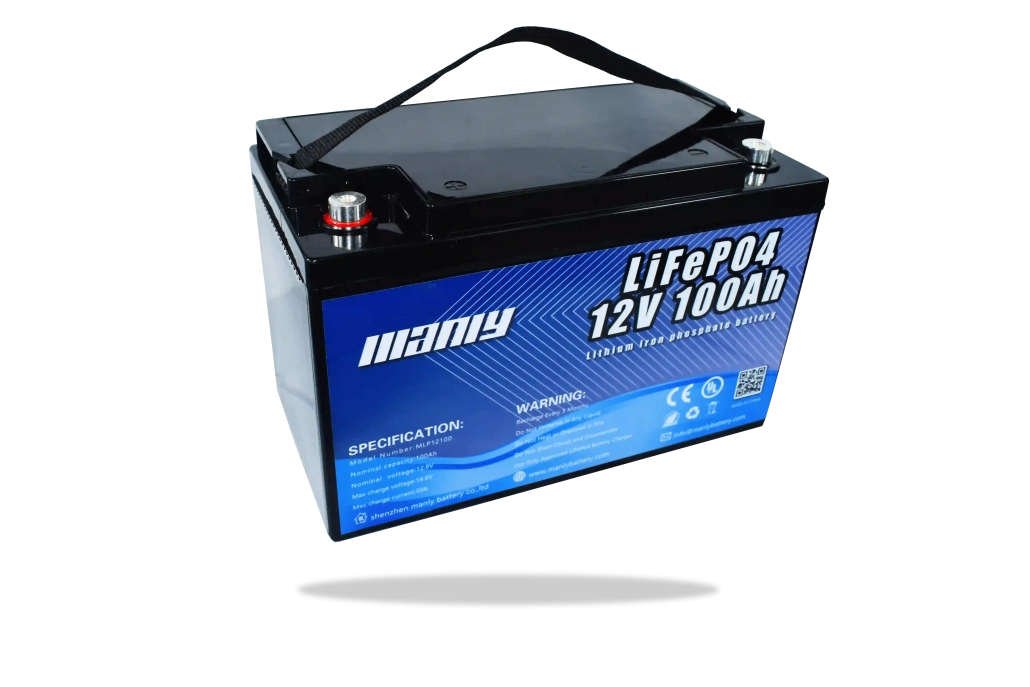
Capacidade de fabricação incomparável
Established over a decade ago, Bateria MANLY has grown to become one of China's leading battery manufacturers. With facilities sprawling across 65,000 square meters in key locations like Shenzhen, Dongguan, and Huizhou, MANLY Battery exemplifies manufacturing excellence. The company boasts a robust production capacity with a daily output that includes battery cells and packs amassing a staggering 6MWh and the assembly of over 3,000 batteries.Portfólio diversificado de produtos
MANLY Battery offers an extensive range of LiFePO4 and lithium-ion batteries that vary from 6V to 72V. These batteries are designed to cater to diverse applications including:- Armazenamento de energia solar:Ideal para instalações residenciais e industriais.
- Fontes de alimentação ininterruptas (UPS):Garantindo estabilidade e confiabilidade de energia.
- Aplicações Móveis e Estacionárias:Desde robótica avançada em aplicações militares até suporte de estação base e iluminação pública solar.

